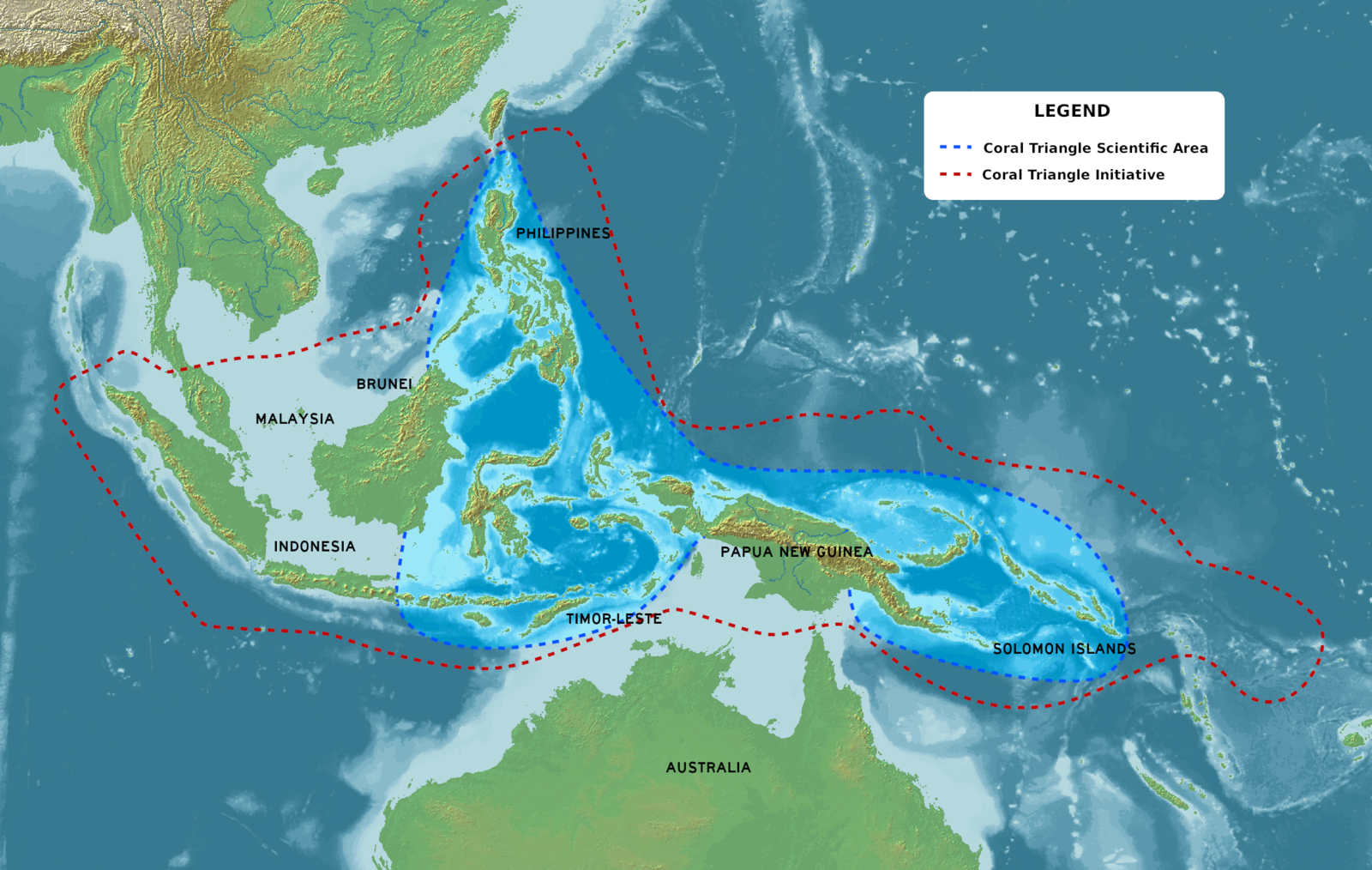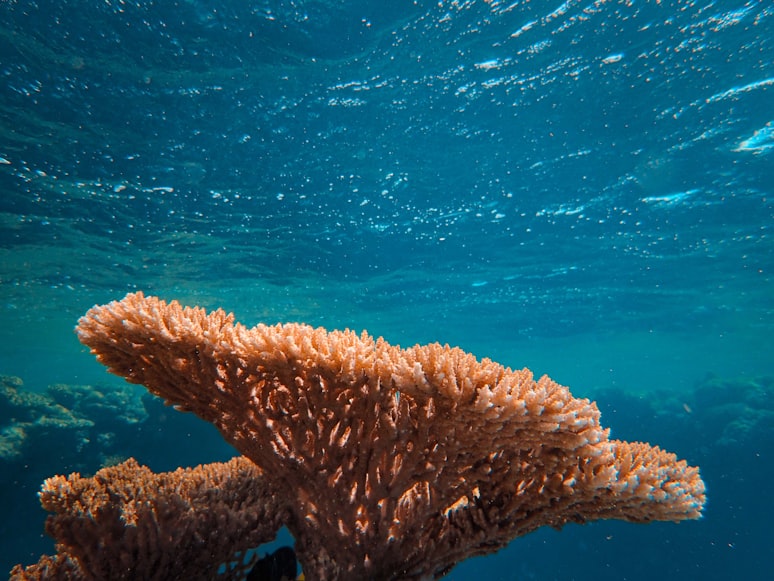The Coral Triangle is known as a vast network of coral reefs that is likened to a “Big Continent” inhabited by diverse species of marine life. The region is recognized as one of “the richest marine ecosystems in the world.”
The Coral Triangle spans six countries in Southeast Asia and the Pacific, namely the Philippines, Indonesia, Malaysia, Papua New Guinea, Solomon Island, and Timor Leste.
Based on a report from Asian Development Bank, the Coral Triangle region holds 76% of the total coral species in the world and is home to 37% of all global reef fish.
Why is it called “the Coral Triangle”?
The Coral Triangle is a marine area that has an extraordinary diversity of species, including more than 500 species of corals, reef fishes, foraminifera, fungid corals, and stomatopods that form reefs by creating a triangular area.
In addition, oceanographic processes, particularly the movement of currents are another key feature that scientists and conservationists refer to in describing the Coral Triangle.
Coral Triangle Biodiversity

According to data from WWF, the Coral Triangle is home to a variety of marine species. One of the species that make up this area is coral reefs with the highest diversity in the world.
Coral reefs in the Coral Triangle region have 15 coral species that are regional endemics or not found in other regions, and 41 other species that are also endemic to Asia.
The Coral Triangle region is also home to 8% of reef fish species with very limited species spread in four regions, namely the Sunda Kecil Islands, Papua New Guinea - Solomon Islands, Bird's Head Peninsula, and Central Philippines.
Furthermore, the Coral Triangle is also home to six of the world's seven marine turtle species, including the leatherback turtle.
This turtle can be found in the Northern Bird's Head Peninsula or Waigeo area, Papua (Indonesia) and New Georgia (Solomon Islands).
Read also: Home to More Coral Species Than Anywhere? Welcome to Indonesia’s Ocean
Coral Triangle in a Global Context
In addition to its beauty and variety of biodiversity, the Coral Triangle plays an important role in maintaining the balance of the global ecosystem.
As Seasians know, coral reefs serve as shelter for many species of fish and other marine organisms, and contribute to absorbing carbon dioxide and providing food sources for millions of living things around them.
The Economic Value of the Coral Triangle
For coastal communities, especially those adjacent to the coral triangle, the existence of this area serves to support livelihoods, main sources of income, and strengthen food security.
According to WWF data, the economic value generated by this area includes its role as a tuna spawning and nursery area that contributes to the global tuna industry with a value reaching billions of dollars, to being a marine resource that supports the growth of the nature tourism industry by generating more than US$ 12 billion annually.
Read also: Indonesia and the U.S. Finalize $35 Million Debt-for-Nature Swap for Coral Reef Conservation
Coral Triangle Challenges and Conservation Efforts

The triple planet crisis has become a major challenge to the sustainability of the region. Climate change leading to coral bleaching, environmental pollution, overfishing, and habitat degradation can threaten coral reef development and survival.
In some locations, unplanned coastal development with poor waste management contributes significantly to sedimentation and pollution that negatively impacts coral reef health.
To maintain this, conservation efforts are being taken as a step towards managing this coral reef triangle area in a sustainable way.
All government agencies and non-profit organizations in the Coral Triangle region implement protection initiatives by forming the Coral Triangle Initiative on Coral Reefs, Fisheries, and Food Security (CTI-CFF), which is a collaboration between six countries involved.
Specifically, the goal of establishing the CTI-CFF is to strengthen conservation, management, and sustainable use measures in the region.
In addition to these legal initiatives, it is important to maintain and protect the coral triangle by raising public awareness regarding the importance of caring for coral reefs and marine ecosystems.
Education and active participation, especially from local communities are expected to have a significant impact in maintaining the sustainability of the Coral Triangle region, especially in the Asian region.



















